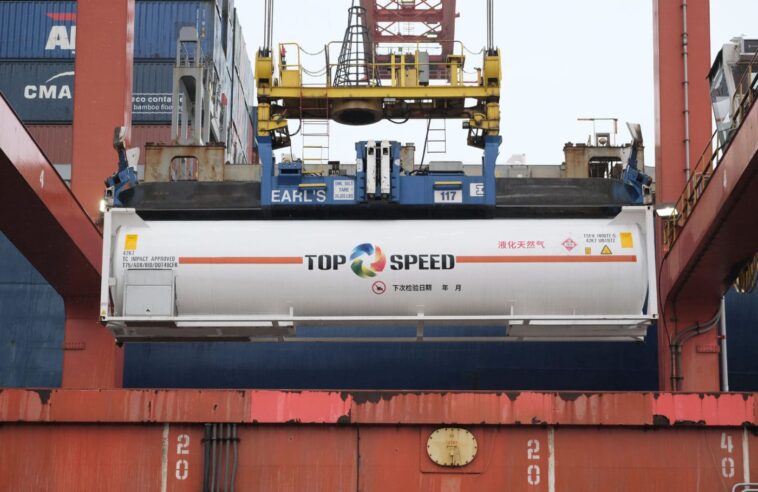[This story originally appeared on The North Coast Review, a blog based in Prince Rupert that contains “items of interest to those living on the North Coast of BC.”]
An ambitious plan to ship LNG by specialized containers to Asian markets would appear to be on hold as the company behind the project is put up for sale.
An asset sale for Top Speed Energy Canada has been announced after the death of its founder, leaving proposed developments in Terrace and Prince Rupert on the list of those LNG plans on pause, perhaps destined to shift over to those that never made it to the finish line.
The publication Business in Vancouver reported on the asset sale in an article on Wednesday, which has a deadline of October 7th in place for any expressions of interest.
Of the two projects, the better known one was the Terrace proposal, where the energy company, which is Chinese, outlined its plans to develop an energy terminal facility near the Terrace Airport and ship LNG by specialized container car to port facilities in Prince Rupert.

The Terrace facility, Skeena LNG which was to be fed by the Pacific Northern Gas pipeline, was planning for a process output of 150,000 tonnes of LNG per year.
It also had a plan to develop a smaller terminal in the Prince Rupert area, to be known as Totem LNG, which would process 75,000 tonnes of LNG per year, but few details of the Prince Rupert initiative were noted on its website as the program moved forward.

Calgary-based Sayer Energy Advisors is handling the asset sale. It notes that the two plants are scheduled to come into service in the fourth quarter of 2023 (Skeena) and the fourth quarter of 2024 (Totem) respectively.
Top Speed also owns and operates a fleet of 76 ISO containers in western Canada for the storage and transport of LNG to domestic markets and various market regions in southeast Asia.
The Top Speed proposal was one of a number of small-scale LNG production facilities that have been in the planning stages in the province in recent years. They generally host a smaller footprint than the mega-projects of ten years ago, but so far, few have made much progress towards development.




